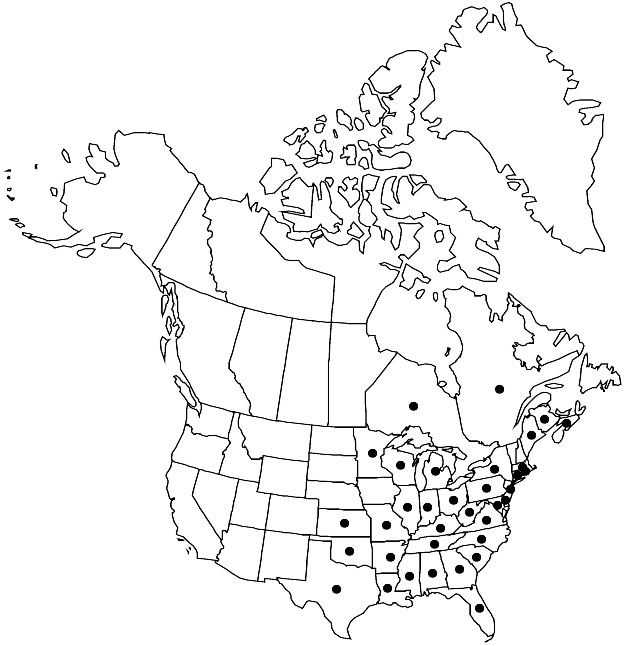Thelia hirtella
in A. Gray, Manual ed. 2, 660. 1856.
Stems creeping, sparsely and irregularly 1-pinnate, lightly tomentose, branches simple; paraphyllia subfoliose; pseudoparaphyllia foliose-ciliate. Stem and branch leaves dimorphic. Stem-leaves 1–1.3 mm; margins plane throughout or erect to somewhat incurved basally, plane distally, densely long-ciliate; apex broadly acute, acumen sometimes spreading-piliferous; laminal cells rhombic to fusiform, 14–30 × 3–10 µm, papillae simple. Branch leaves 0.6–0.9 mm; margins dentate-toothed basally, sharply serrate distally; medial and apical laminal cells rhombic, 14–20 × 3–8 µm; juxtacostal basal-cells fusiform, smooth, walls sometimes porose. Seta 0.4–1.2 cm. Capsule 1–2 mm; operculum 0.8–1 mm. Calyptra 2–2.5 mm. Spores 12–16 µm.
Habitat: Tree trunks, rotting stumps, humus, soil, base of trees, rock
Elevation: low to moderate elevations (0-1300 m)
Distribution

N.B., N.S., Ont., Que., Ala., Ark., Conn., Del., Fla., Ga., Ill., Ind., Kans., Ky., La., Maine, Md., Mass., Mich., Minn., Miss., Mo., N.J., N.Y., N.C., Ohio, Okla., Pa., R.I., S.C., Tenn., Tex., Va., W.Va., Wis., Mexico (Tamaulipas), West Indies (Dominican Republic)
Discussion
Thelia hirtella has the broadest distribution of any Thelia species, ranging from southern Nova Scotia south to Florida and west to eastern Oklahoma, eastern Texas, and northeastern Mexico. The deltoid leaves of T. hirtella are decurrent and abruptly contracted distally into long, piliferous (at times spreading) apices. The stem leaf margins are long-ciliate, but those of the branch leaves are dentate-toothed at base and sharply serrate distally. Thelia hirtella has rhombic distal laminal cells with stout, unbranched, columnar papillae on the dorsal side, but the cell walls are smooth to somewhat bulging on the ventral side. The costae in T. hirtella are faint and often spurred or 2-fid.
Selected References
None.
Lower Taxa
"-fid" is not declared as a valid unit of measurement for this property. "spurred" is not a number.